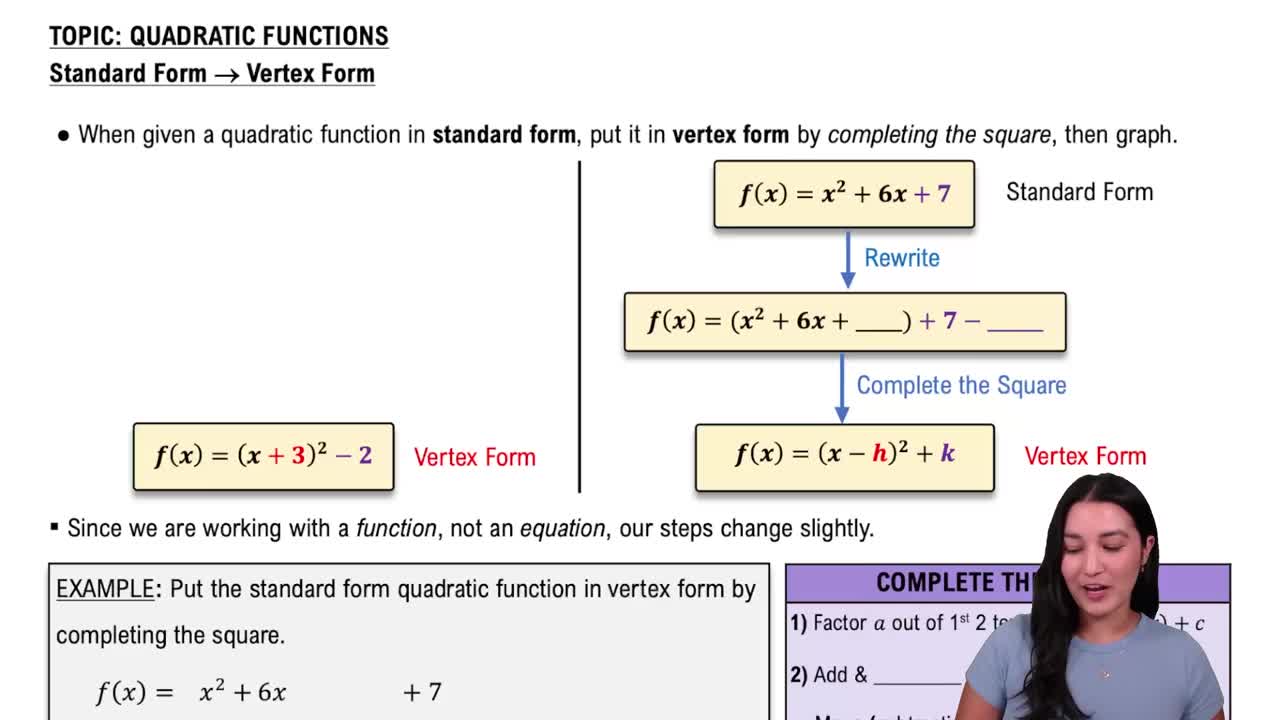Quadratic Equations
A quadratic equation is a polynomial equation of the form ax^2 + bx + c = 0, where a, b, and c are constants, and a is not zero. The solutions to these equations can be found using various methods, including factoring, using the quadratic formula, or completing the square. Understanding the standard form and properties of quadratic equations is essential for applying these solution methods effectively.
Recommended video:
Introduction to Quadratic Equations
Standard Form of a Quadratic
The standard form of a quadratic equation is expressed as y = ax^2 + bx + c. This form highlights the coefficients that determine the shape and position of the parabola represented by the equation. Recognizing how to manipulate this form, such as isolating the quadratic term and completing the square, is crucial for solving the equation and understanding its graphical representation.
Recommended video:
Converting Standard Form to Vertex Form
 Verified step by step guidance
Verified step by step guidance Verified video answer for a similar problem:
Verified video answer for a similar problem:



 6:36m
6:36m